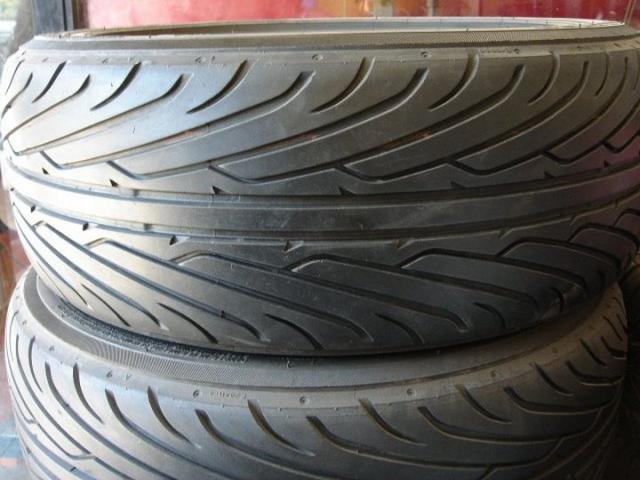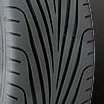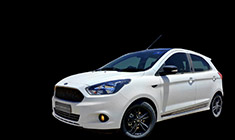
Choosing The Right Set Of Tyres for your Car
Tyres are the fundamental link between your car and the road. A good set of tyres will improve the handling, steering, acceleration and braking of your car, and will make full use of any further modifications performed to your car. This article contains the bare essentials of choosing the right set of tyres for a typical passenger vehicle without getting too technical or specific.
There are five main elements you have to consider when choosing the right set of tyres for your vehicle:
- Tube-type or tubeless
- Size of tyre
- Tread pattern
- Rubber Compound
- Overall quality of the tyre
1. Tube-type or tubeless
The answer to this question is very simple. Opt for tubeless tyres. They are safer, more advanced and have a few other small advantages too. You do NOT need to have alloy wheels in order to use tubeless tyres. However, for the best results your steel wheels should be rust free (or just buy a new set as they are very cheap) and preferably have the insides coated with an anti-rust coating.
(Discuss : Tubeless Tyres On Steel wheels?)
2. Size
Size is probably the most talked about and controversial part of buying tyres if you are going for an upsize. Tyre sizes are represented in a standard format. For eg. 205/55 R 15, which can be read as follows:
205 (mm) - or 20.5cm is the width of the tread on the tyre.
55 (%) - is the height of the sidewall represented as a percentage of the tread width.
R (Radial) - Radial construction, as almost all tyres are nowadays.
15 (inches) - Is the rim diameter of the wheel on which this tyre is designed to fit.
Choosing the right size can be broken up into three decisions:
i. Rim size:
You have to choose a tyre size designed for exactly the size of rim you plan to mount the tyre on. Larger rims will effectively reduce the sidewall height (making the tyre lower profile) and therefore minimize sidewall flex when cornering, adding to the "on rails" feel, however, this will obviously have an adverse effect on ride quality and comfort.
ii. Tread width:
Generally a 0mm-20mm increase in width from the stock size is considered within the realm of sanity in the Indian context. Keep in mind that not only size, but tyre compound also plays a large role in "grippyness".
To get a better idea of whether you should upsize your tyre width (if at all) see the following pointers:
Go wider if...
- You frequently corner at very high speeds.
- You want shorter braking distances.
- You consider looks as important as performance.
- Your car produces a lot of power.
- Your car model is notorious for having inadequately-sized stock tyres.
- Your car understeers a bit
Do not go wider if...
- You don't want to disturb your fuel economy.
- You want to keep your steering light.
- You often drive during peak hours within city limits.
- Your car's variant comes with sufficiently wide tyres.
Keep in mind that the tyre width also has an ideal wheel width which it works best with, try to keep this in mind otherwise you may end up having stability issues when braking hard or cornering. (Scroll down to the Rim-Width calculator to find out if your rims will be ok for your new tyres)
If you increase the width of your tyres, you should also confirm that they do not touch the wheelwells of your car on turning the steering wheel all the way and when the car is under full load.
iii. Sidewall Height (or Profile):
After selecting your rim size and your tread width, the objective is to choose a sidewall profile that keeps the overall diameter of the new tyres as close to original as possible. Use this calculator to judge changes in size. Generally a difference in the range of 3-4% is considered acceptable.
Keep in mind that a change in overall diameter (OD) of your tyre & wheel combo will cause a slight error in your speedometer readings and odometers readings, which is purely academic. Also your ground clearance may change very slight (half the change in diameter).















